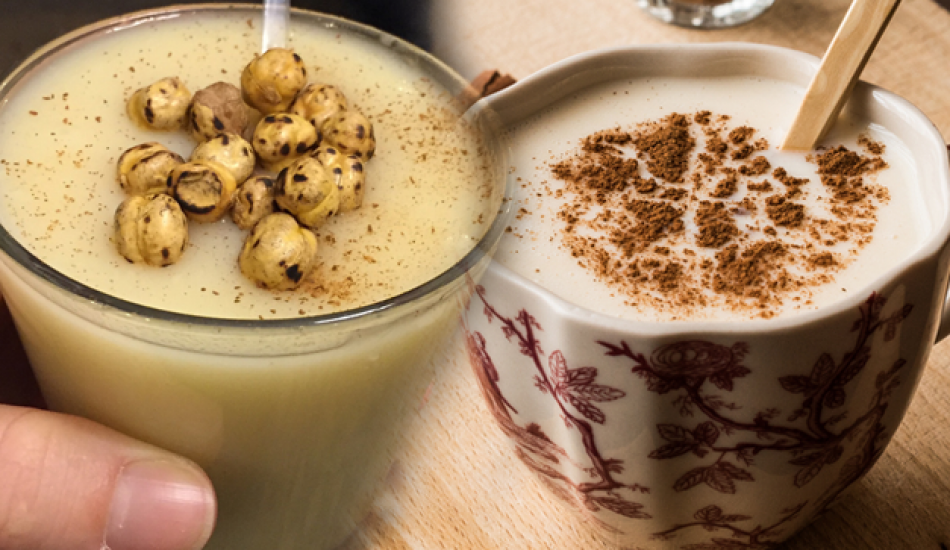
Boza – One of the Oldest Turkish Drinks
Boza is one of the oldest Turkish beverages, and is made from fermented grains. In Turkey mostly durum wheat is used and in other countries corn, barley, rye, oats, wheat, buckwheat … It contains nutritious values like protein, calcium, iron, zinc, phosphorus, thiamine, riboflavin, and niacin. It gives your stomach a full feeling, so it’s better not to drink boza during or right before your meal.
History of Boza

Central Asian Turks began to make boza in the 10th century. In the 16th century boza was banned by Sultan Selim II because of the opium used in the mixture. Also in the 17th century, boza got its share from the alcoholic drinks prohibition of Sultan Mehmet IV since excessive fermentation caused a higher alcoholic level.
In the 17th century Turkish traveler Evliya Çelebi reported that boza was largely drunk by janissaries in the army and it contained a low level of alcohol. So, it was tolerated due to its warming and strengthening effect for the soldiers.
In the 19th century, the sweet and non-alcoholic version became popular at the Ottoman Palace, and also in society. Hacı Sadık Bey is the founder of today’s most well-known boza brand Vefa.
In 1870 he immigrated from Albania and settled in the Vefa district in Istanbul. He reinterpreted the thin and sour boza. His version was thicker, less tart, and became a brand in 1876. Today the brand still produces boza between October and April.
Where to Drink Boza

A few decades ago you could hear boza sellers shouting to sell freshly prepared boza on the streets during winter evenings. Parallel with the industrial development and rapid growing consumption patterns, boza claimed its place in the stores since the early 2000s.
During the winter you can find boza almost everywhere: in supermarkets, patisseries and cafes. I recommend paying a visit to the historic Vefa Bozacısı in Vefa Fatih, Katip Çelebi Cad. No:104/1. Atatürk drank boza in this shop, and his glass is still on display.
Salep

Orchids have fascinated mankind for more than 3000 years, not only with its aesthetic beauty but also with its medical might. The idea of making a drink out of this enchanting flower belongs to Turks, thanks to their religious belief. In the 8th century, Turkish people converted to Islam. According to the belief, they are not allowed to drink alcoholic beverages. So they came up with the idea of salep, a hot milky drink to warm you up during the cold winters.
Where to Find Salep

This precious flower grows almost everywhere in Turkey, and there are lots of varieties. Yet, some varieties are facing extinction. To get 1 kilo of salep flour, more than 1000 orchid tubers are pulled out of the soil. And it takes up to 7 or 8 years for the orchid’s tubers to grow sufficiently to use for salep production. Therefore, export of salep is prohibited. However, instant versions with salep flavor are exported.
The two common places to drink a nice warm cup of salep are Emirgan Sütiş (Sakıp Sabancı Caddesi, No:1/3; Emirgan, Sarıyer) and Öz Süt (İstinye Park AVM).
Home-made Salep
It is easy to make salep at home … as long as you can get the salep flour. For six people, mix 2 tea spoons of salep flour with 2,5 tea spoons of sugar. Slowly add 3,5 glasses of cold milk, and stir. Finally boil the mixture while stirring on low fire for 10 to 15 minutes. Serve hot in a cup dusting with grinded cinnamon, nutmeg or ginger on top.
Instant and Ready to Drink Versions
Or you can also get the instant versions. Warm milk, add the flour, stir and finally add cinnamon. Unfortunately, they have more salep flavor than real salep, some as little as 0,3%. Some brands have even ready to drink versions. Those you just need to heat, add cinnamon and you’re ready to serve.















Add Comment